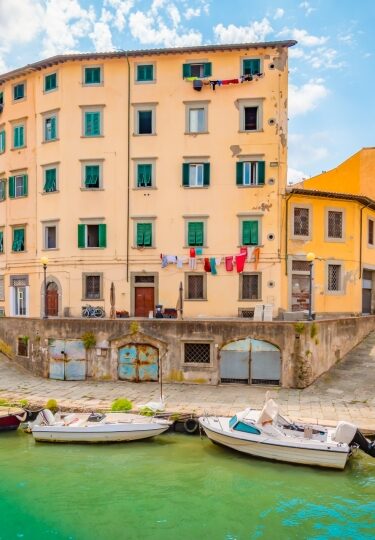Livorno, Italy is Tuscany’s third-largest city and a major port with a tumultuous past. For many, it’s the gateway to the vineyard-striped hinterland and Renaissance big beasts of Florence, Siena, and Pisa.
Because of this, Livorno may just be Tuscany’s most authentic city. Any traveler who takes the time to wander among the broad-chested, pastel-painted merchant houses of its Renaissance-era canal district or nip into off-the-beaten-path neighborhoods like San Jacopo will discover its distinctive character, charm, and welcome absence of crowds.
It wasn’t always this way. The 19th-century grand tourists had their trunks regularly unloaded onto Livorno’s sun-warmed quays, attracted by this port-city’s liberal reputation, seawater pools, and promenade taking in the island-spotted Tyrrhenian Sea vistas.
Why Visit Livorno
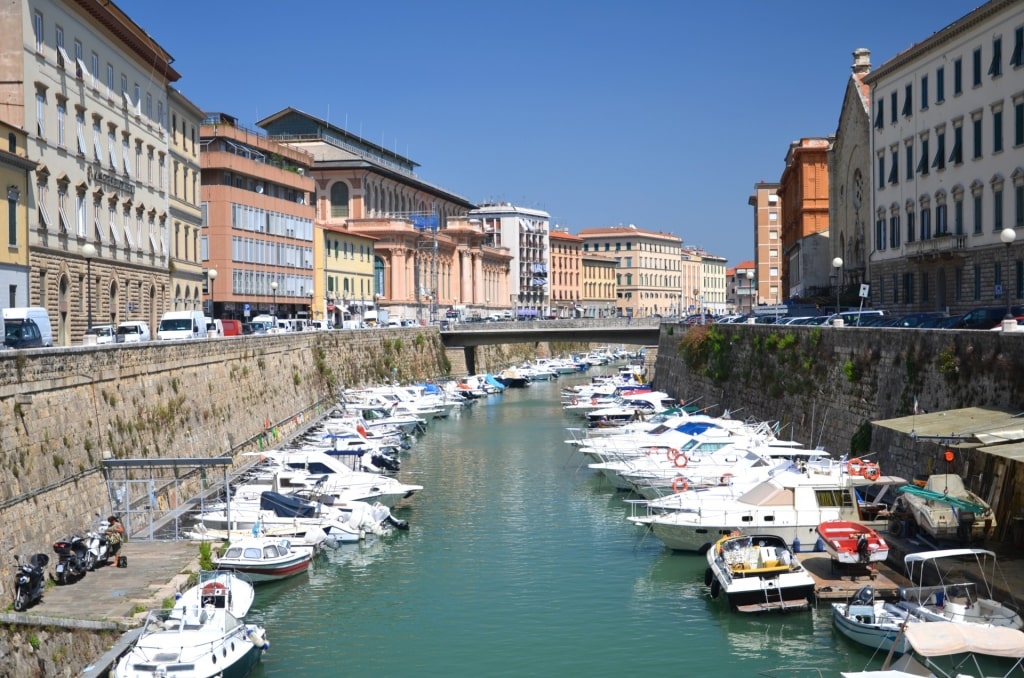
Venezia Nuova
Livorno’s reputation as a stop worth a traveler’s time is hampered by being situated in Tuscany, the province with perhaps the country’s greatest cultural cache outside of Rome.
And with no leaning tower to call its own, it hasn’t a heavyweight “must-see” calling card to distinguish itself from the pack.
Nevertheless, Livorno—or “Leghorn” in English—offers a slice of real Italy, a place where the mercato is still a mercato and not a converted, tourist-friendly food hall.
It also offers a different side of the medieval history that makes Tuscany so fascinating, with its cultural and historic sites somehow all the more intimate simply because they’re not world-famous.
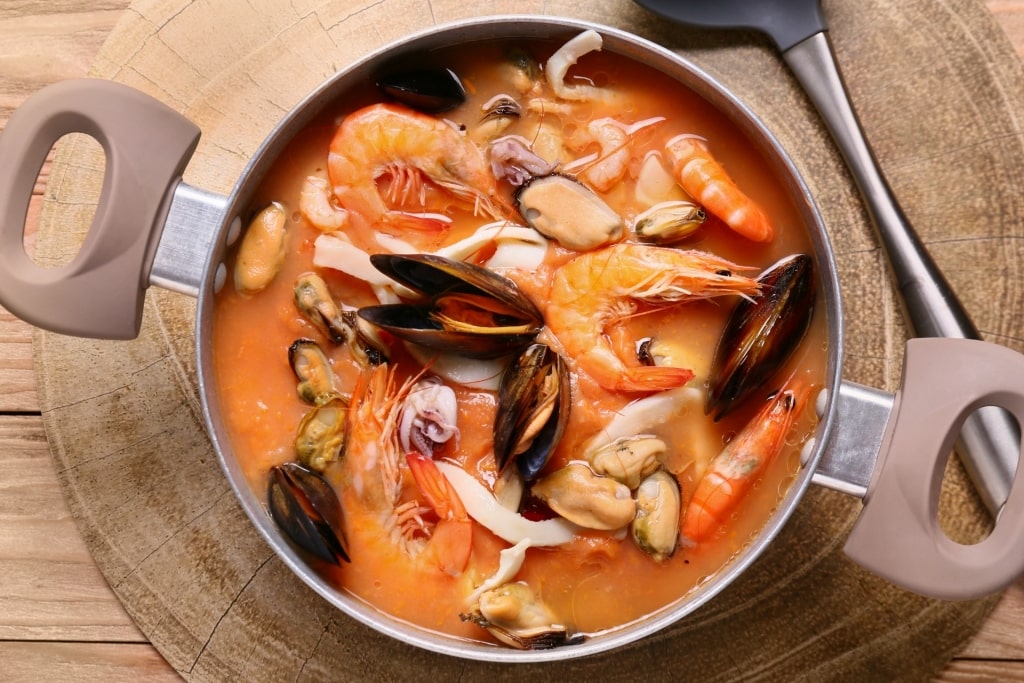
Caccuccio
But most of all, it’s a city that invites you to come and eat. The sea winds its way into Livorno’s canal-riven heart and the stomachs of its citizenry.
Livorno’s signature dish is the fish stew caccuccio, although you’ll also find dishes such as riccio (sea anemone linguine), riso nero, (cuttlefish ink risotto) and totani (baby squid) on the creative menus of its osterias.
History & Culture
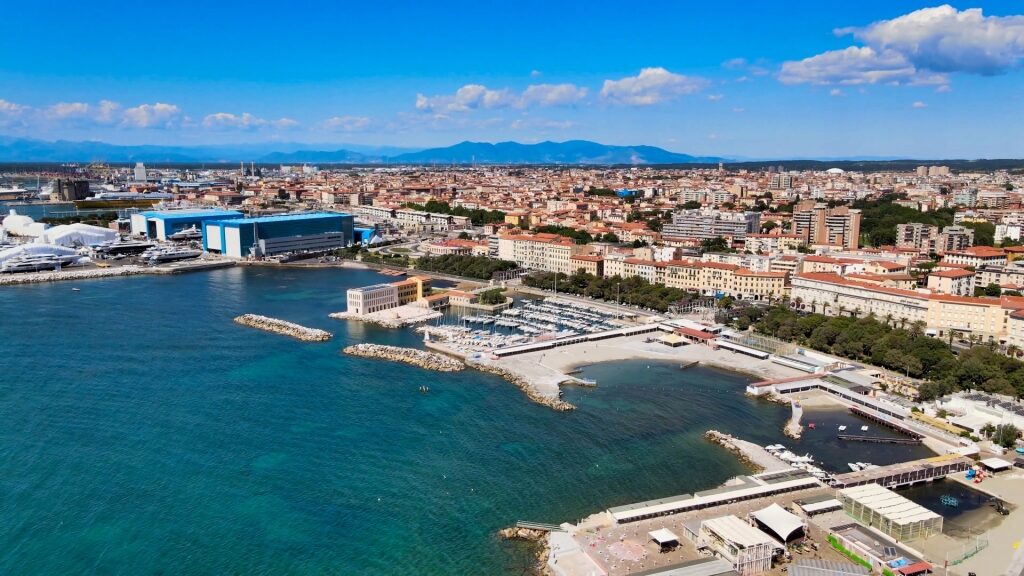
Livorno
A tiny fishing village in 1017, Livorno grew from its humble beginnings into one of the Mediterranean’s busiest ports and a thriving city renowned for its cosmopolitan world view.
During medieval times, the strategically important city was traded between power players such as Pisa, Milan, and Genoa (“Livorno” is a mangling of the Genoese “Ligorna”). It was only as Livorno came under the influence of Florence (sold in 1421 by the Genoans for the princely sum of 100,000 gold florins) that its fortunes changed for the better.
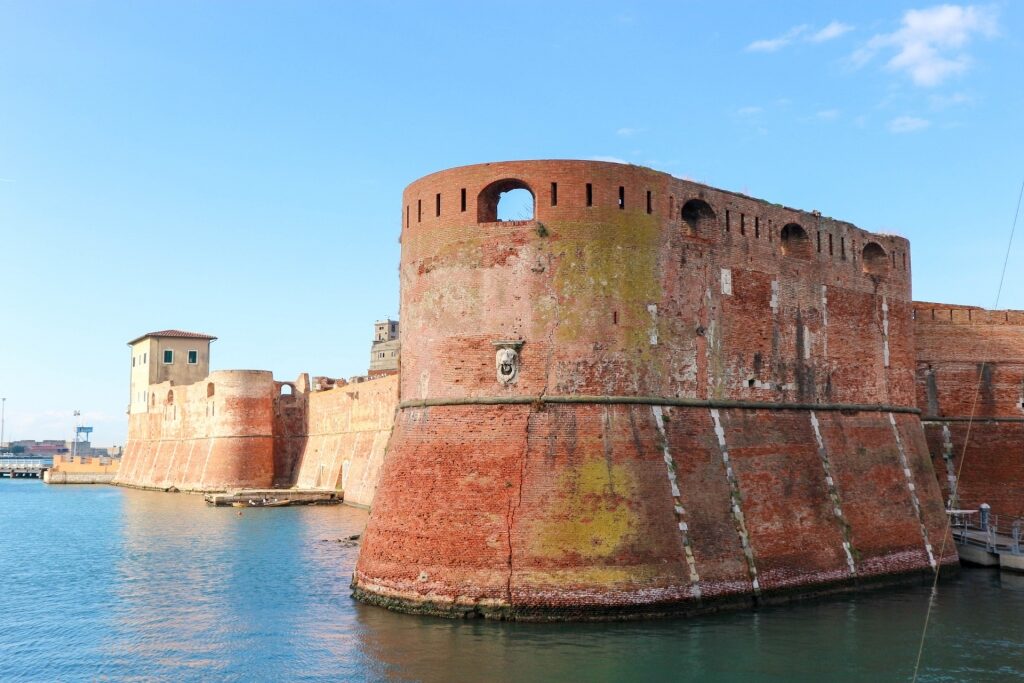
Fortezza Vecchia
The Medicis, keen to bolster their naval ambitions, ramped up Livorno’s fortifications. The Fortezza Vecchia was constructed at this time, while Renaissance starchitect Bernardo Buontalenti was brought in to redesign the city.
By the late 1600s, the Italian port was beginning to flourish. A combination of its status as a “free port” (offering no duty to be paid on goods traded here) and religious tolerance saw its population swell.
Jews from Iberia, fleeing persecution, sought out Livorno. By the 18th century, the city had surpassed Pisa as Tuscany’s most significant port.
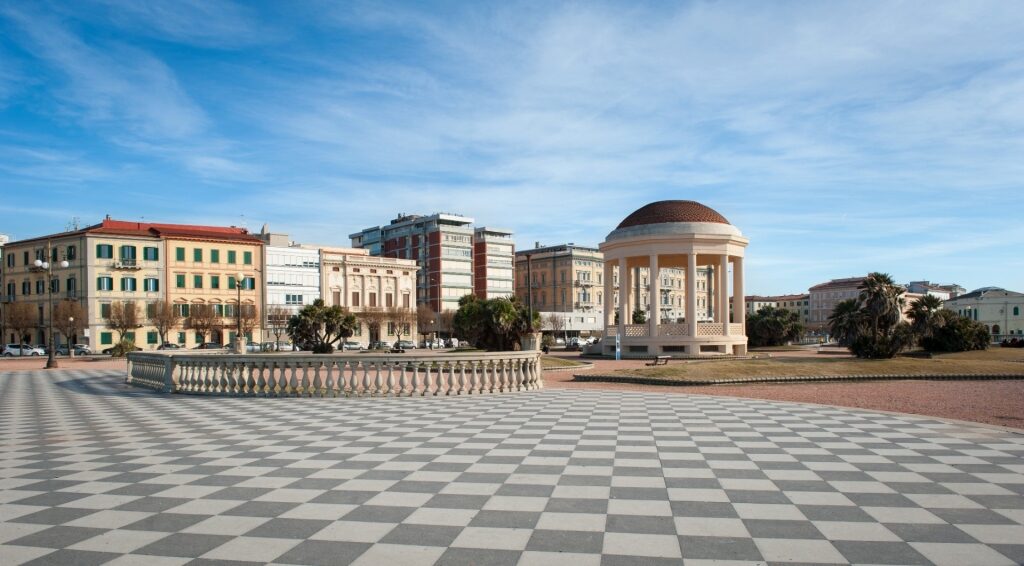
Terrazza Mascangni
Trade boomed with all the major European powers, especially Britain. Livorno became a popular destination for wealthy visitors keen to breathe the medicinal sea air. The legacy of this is the eleven thalasso spas found throughout the city.
Also, no doubt waxing lyrical about Livorno were the devoted Italopiles Lord Byron and Percy Shelley. The latter would die just offshore, having sailed out from the port of Livorno before being caught in a storm and drowning.
By the 19th century, Livorno was changing hands again as Napoleon redrew the map of Europe. It would pass from French control to the Austrians before, finally, with the Congress of Vienna, Livorno became a part of unified Italy in 1861.
Tips for Visiting Livorno, Italy
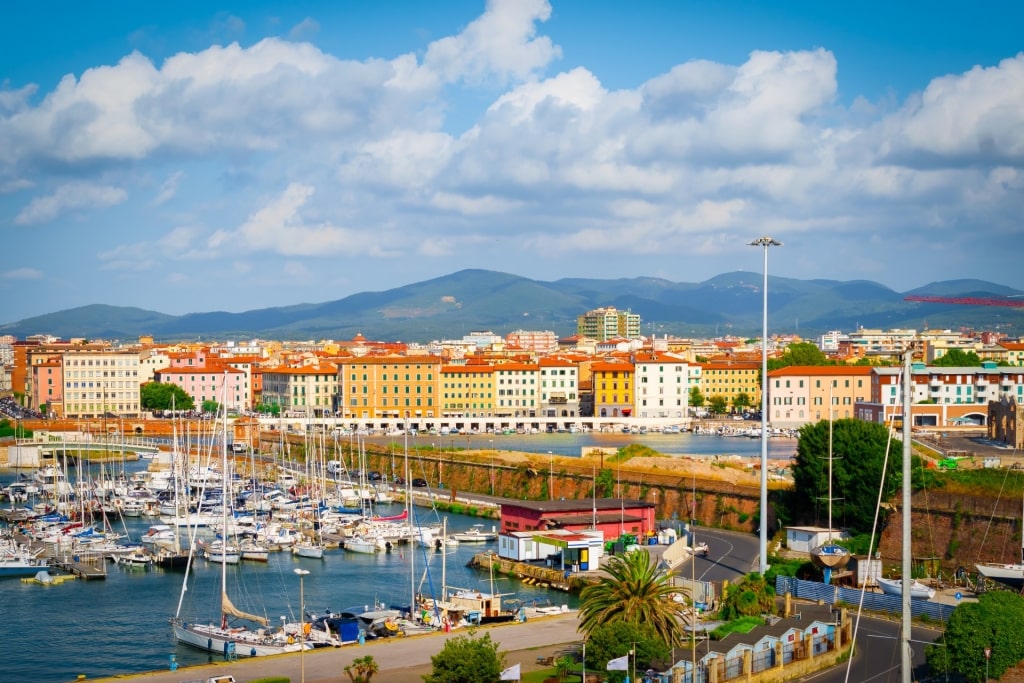
Livorno
Damage during World War II means that its historic architecture tends to be clustered together in what was designed to be the “ideal Renaissance city” by Buontalenti.
Probably the best way to arrive is by boat, as you’ll sail into the atmospheric Medicean port of Livorno, Italy. Historic fortifications such as the Fortezza Vecchia dominate the scene with its blushing brick walls descending directly into the azure water.
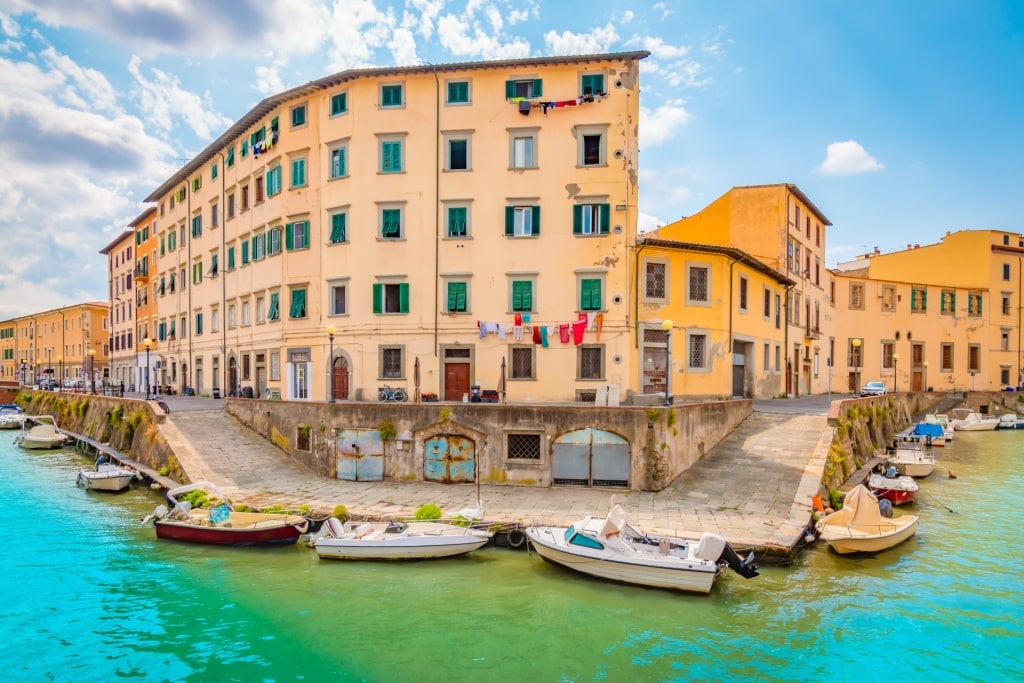
Venezia Nuova
The city’s most picturesque neighborhood, the 17th century Venezia Nuova, a network of canals, leads off from the port and is a must to explore on foot.
Built by Venezian craftsmen to connect the water to the medieval merchants’ grand houses, it’s a stroll through the city’s Renaissance beginnings.
In the evening, the streetlamps glowing gently, the bars and restaurants in what were the former storage areas of the merchants’ houses are one of the city’s social hubs. La Ponceria Livorno, on the canalside, is the aperitivo bar of choice for the locals here.
Things to Do & Attractions in Livorno
Visit Fortezza Vecchia
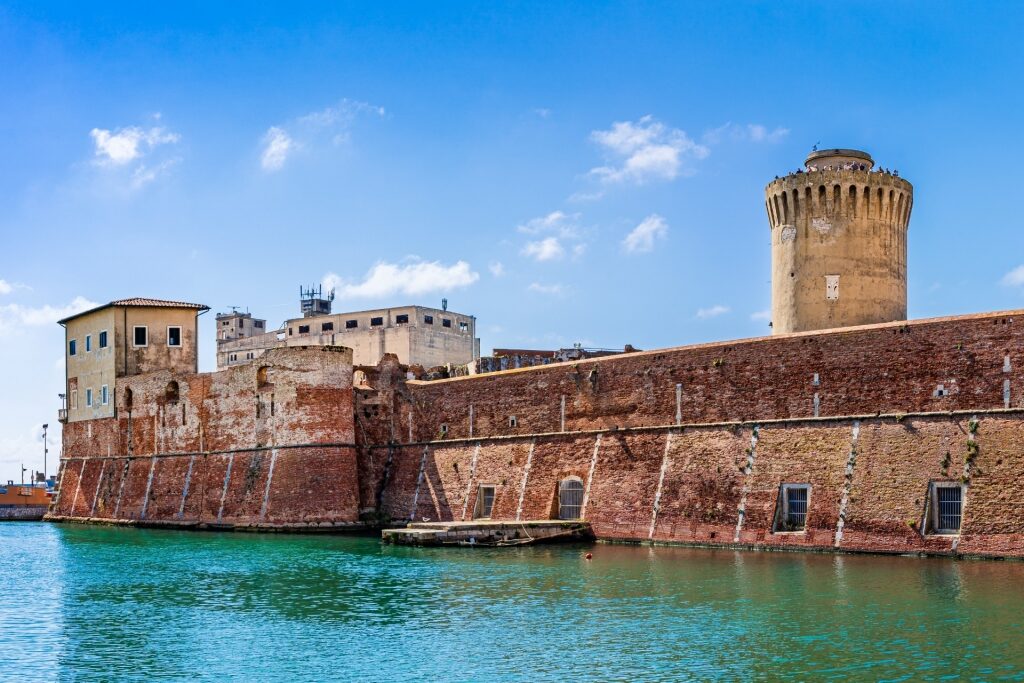
Fortezza Vecchia
The Fortezza Vecchia, with its prominent position by the port and former exclusivity, is a good place to begin your tour of Livorno, Italy. This Medician-era fortress, constructed on the same spot as a previous Roman fortification, offers an atmospheric wander permeated by the smell of the sea.
At some point, be sure to climb the Fortezza Vecchia’s tower and take in the panoramas over the city and the harbor, and the hazy outline of Isola di Gorgona on the horizon.
See Art at the Museo Civico Giovanni Fattori
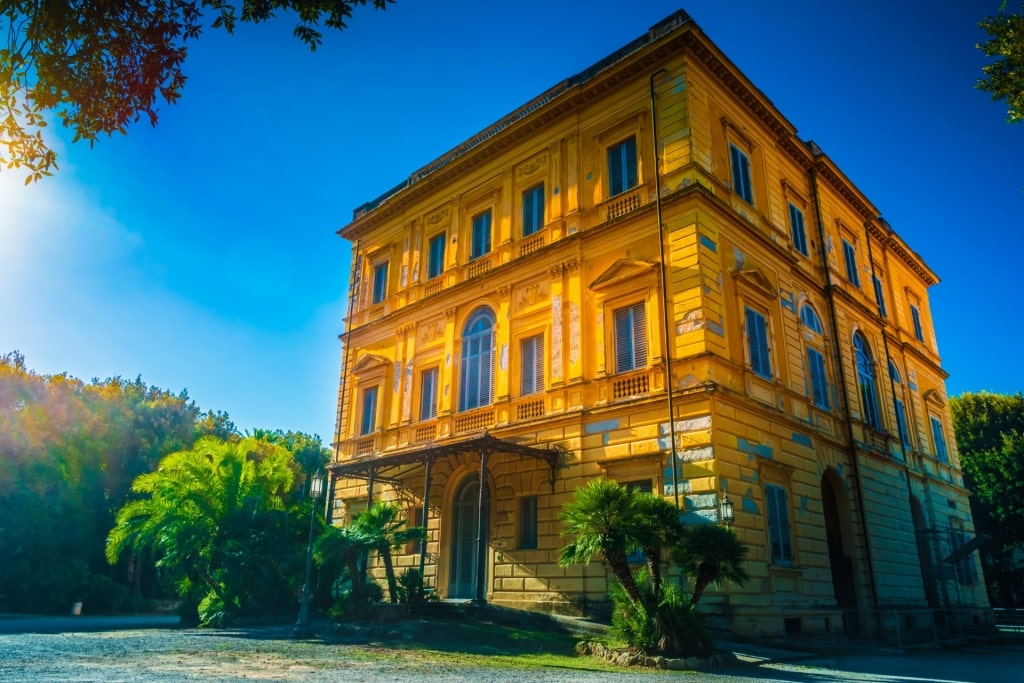
Museo Civico Giovanni Fattori
You’ll find the brightest lights of the city’s artistic heritage housed within the Museo Civico Giovanni Fattori.
Despite Livorno’s connection with the artistically rapacious Medicis, it wasn’t until the 19th century that the city had its own artistic moment.
The Macchiaioli was a group of Livornese painters who experimented with elements of impressionism several years before the French school conquered the world. Their pastoral-inspired oils hung in stately Villa Mimbelli, where this collection is housed, are well worth your time.
The movement’s name refers to the fact that the artists painted outdoors, often in the “macchia” or Mediterranean shrubland. It also describes the daubs of paint they used in their technique.
Stroll the Terrazza Mascangni
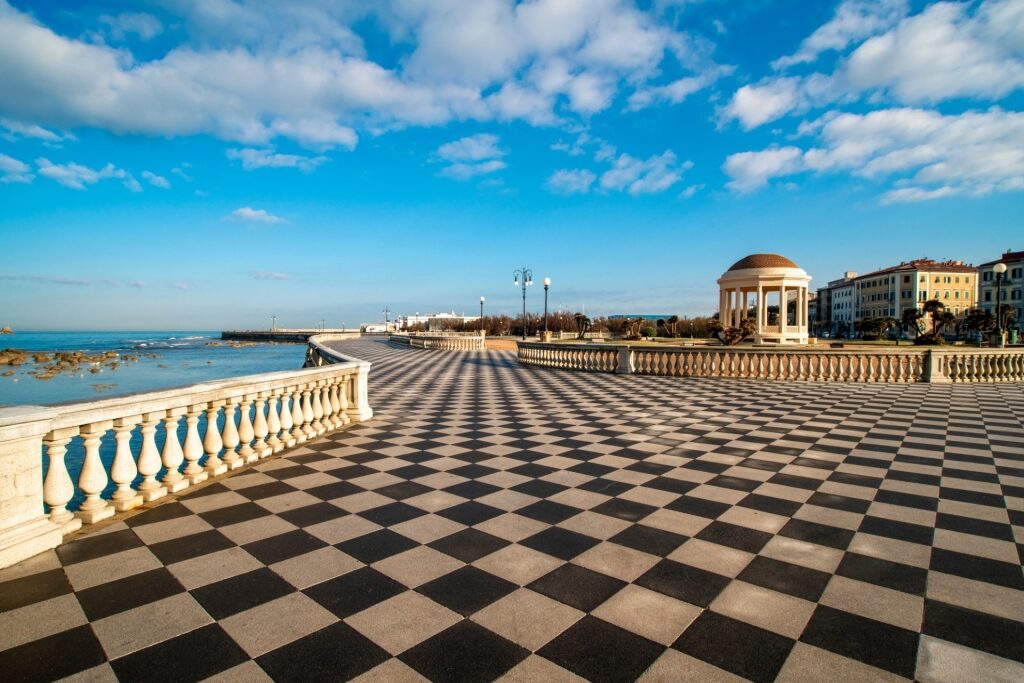
Terrazza Mascangni
The neoclassical Terrazza Mascagni is one of the nicest places to stroll along the Livorno waterfront—the locals call it their “window to the sea”. This grand checkerboard promenade, obliterated in World War II, was precisely rebuilt to its original specifications in the late 1990s.
Once you’ve taken in the views of the Tuscan archipelago, retreat to Viale Italia and one of its hip bars for a refreshing spritz.
Explore San Jacopo
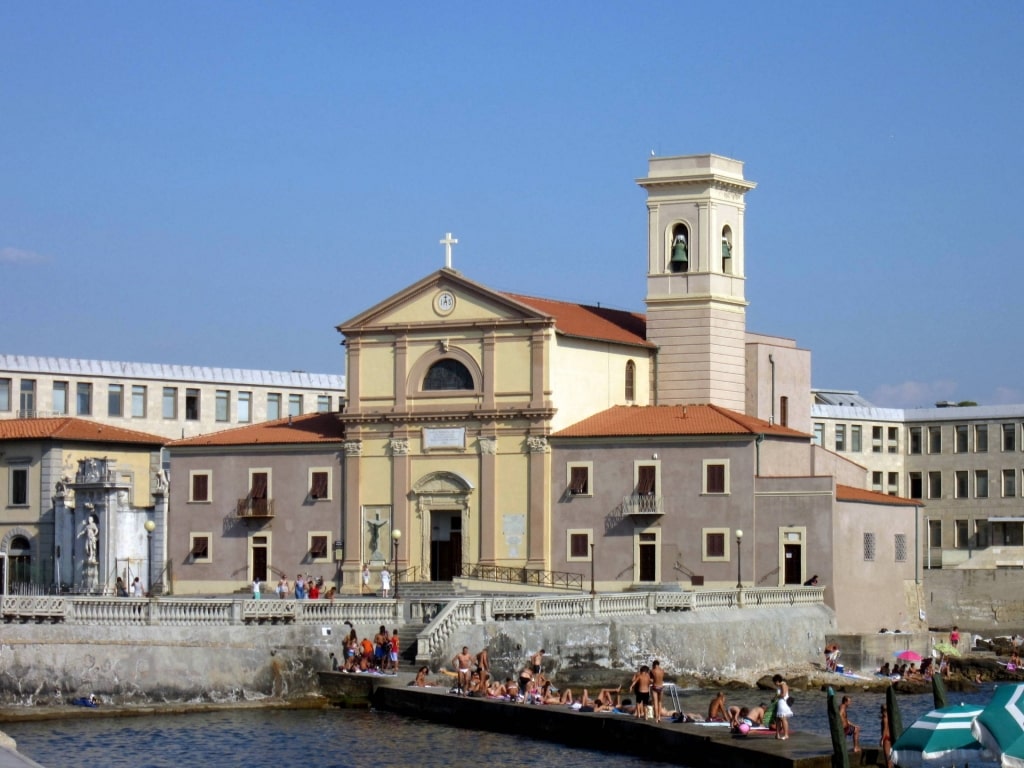
San Jacopo Photo by Luca Aless on Wikimedia Commons, licensed under CC BY-SA 3.0
Just a short walk south of Terrazza Mascagni, past the seafront lido, and you’ll arrive at the scooter-strewn streets of San Jacopo.
This trendy neighborhood makes for an excellent dinner spot (try Visi e Virtu) or an afternoon’s browse of its artisan food boutiques. Look out for the trove of Vespa memorabilia on the checkerboard floor of local legend Marco Quaretta’s vintage Vespa showroom.
Hike to a Sanctuary
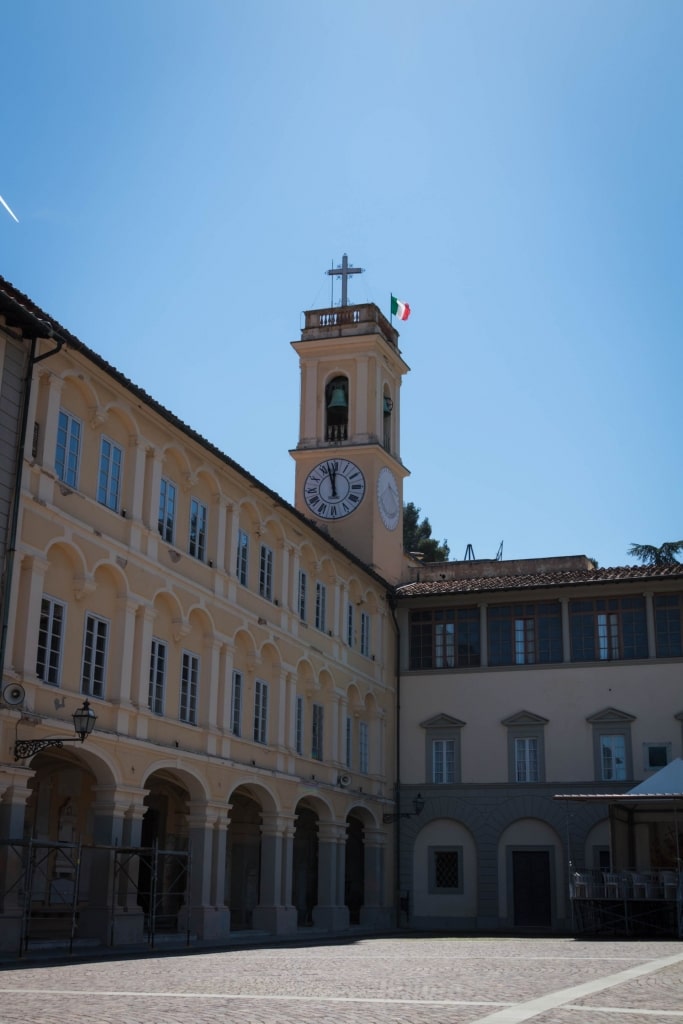
Santuario de Montenero
The Santuario de Montenero is reached by a small trip via funicular—or a three-mile hike. Found in the higher elevations of the city’s south, the views are excellent over the city, although the real visual treats reside within the chapel.
Daubed in rustic style, a graphic collection of votive paintings from throughout Livorno’s history depict how the Mary of Montenero relic housed here saved the artists from certain death. It’s a mesmerizing exhibition of real power.
Gaze at the Leaning Tower of Pisa
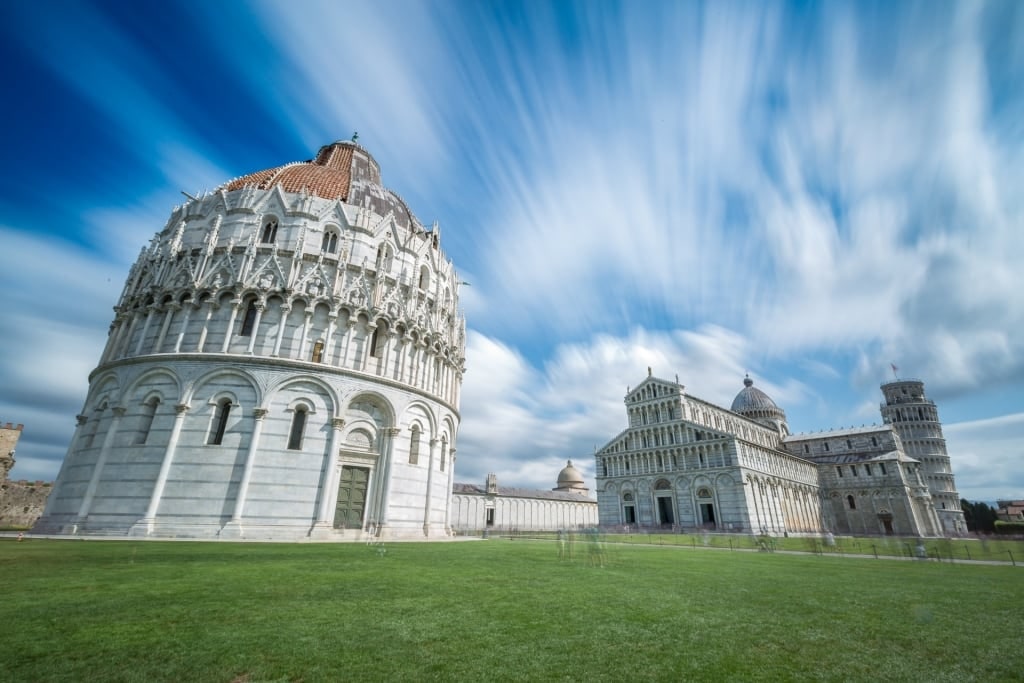
Pisa
Livorno is well-placed for day trips to a trio of Tuscan highlights. In under an hour you can reach the gorgeous walled city of Lucca or Pisa, with its enduring icon—the famous Leaning Tower.
Once you’ve climbed to the top of this architectural curio, it’s on to the Pisa Baptistry below and Pisano’s pulpit—the starting point of the Renaissance.
While you’re in Pisa, make time to explore the Centro Storico, the medieval center, its streets lined with cafés and restaurants.
Discover Medieval Tuscany
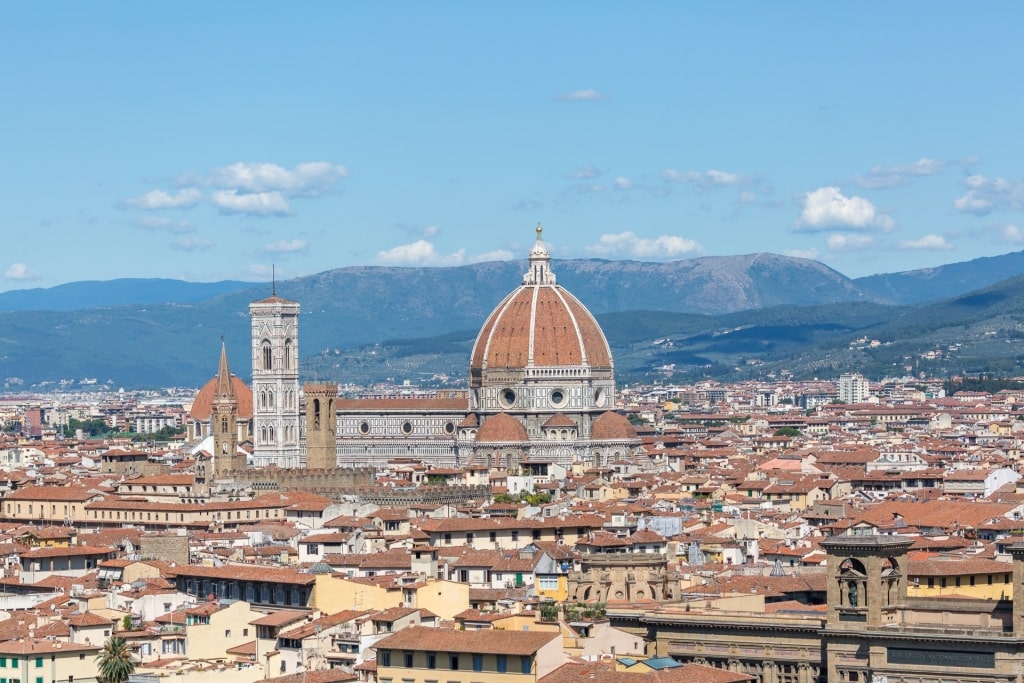
Florence
Just under a two-hour drive east from Livorno, you’ll reach Florence—the city of the port’s medieval masters.
Or head in a southeast direction for roughly the same amount of time (although on snakier roads), and you’ll arrive at moody Siena. Florence’s medieval rival is home to the world-famous (and controversial) Palio horse race, which takes place every July.
Read: Two Days in Florence
Food & Drink
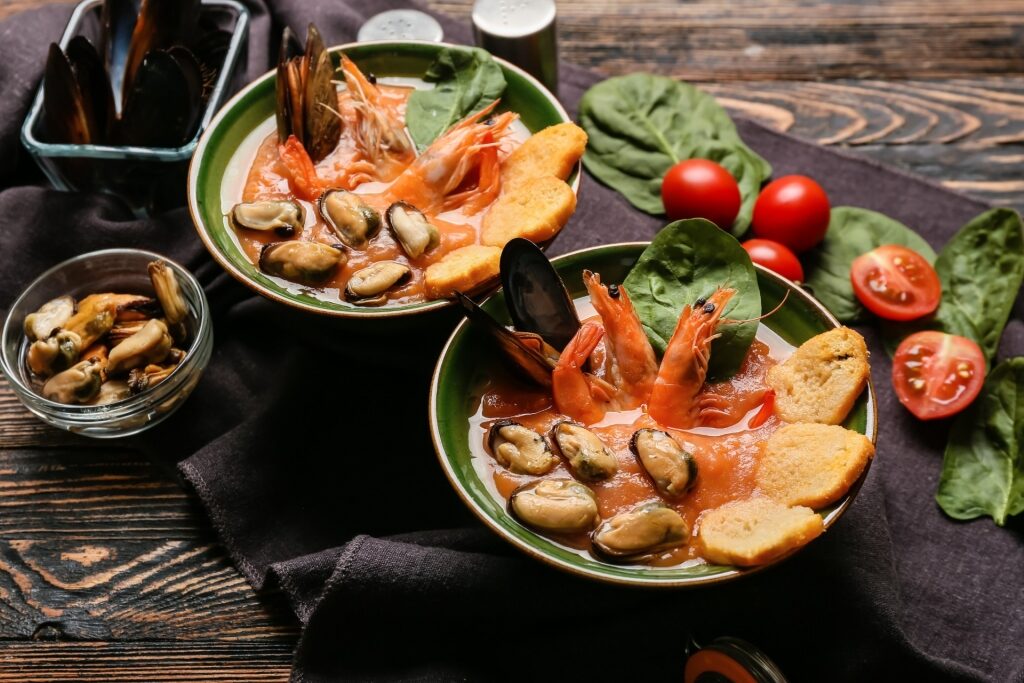
Cacciuccio
Above all else, Livorno is best known for being the Tuscan coast’s leading seafood destination. Its long history as a commercial port has endowed it with a rich and complex culinary heritage, both international and entirely Tuscan.
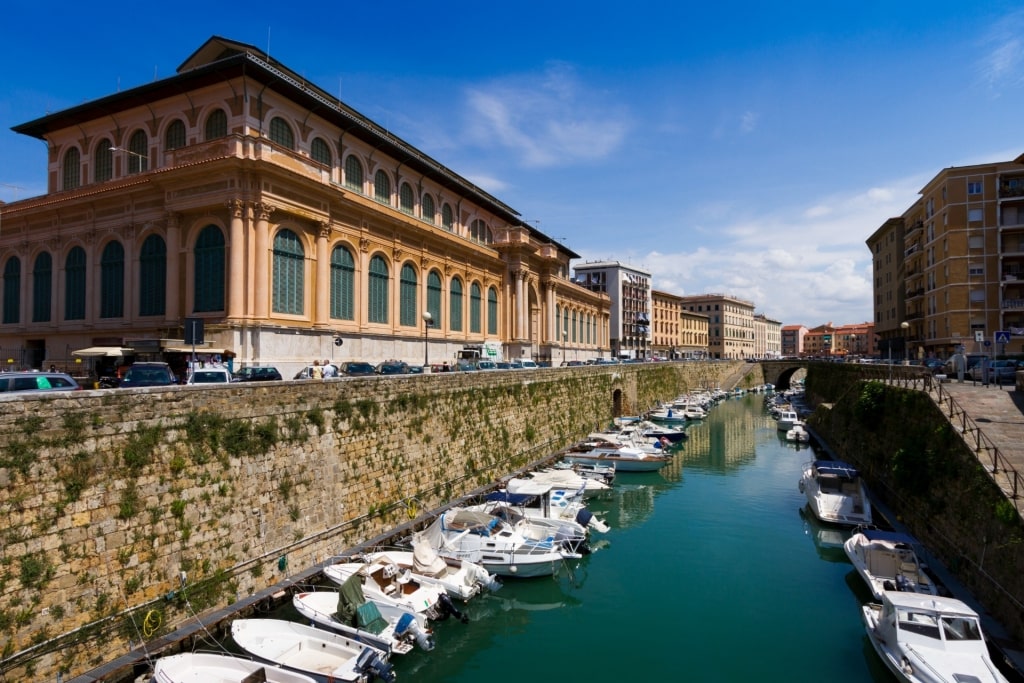
Mercado Centrale
Besides going on a highly recommended food foray, the best way to get under the skin of its Italian food culture is to book a guided culinary tour.
An essential stop along the way will be at the city’s Mercado Centrale. Arrive early to be greeted by the fried, doughnutty scent of frati—delicious sweet fritters that make for a perfect breakfast snack.
This grand belle epoque building dominates the canalside beside Scali Safi and still operates in its original capacity as a bustling local market, supplying fresh produce.
Besides being a wonderful environment to immerse yourself in the energy of the city, the Italian market is where the ingredients are sourced for Livorno’s signature dish, cacciucco.
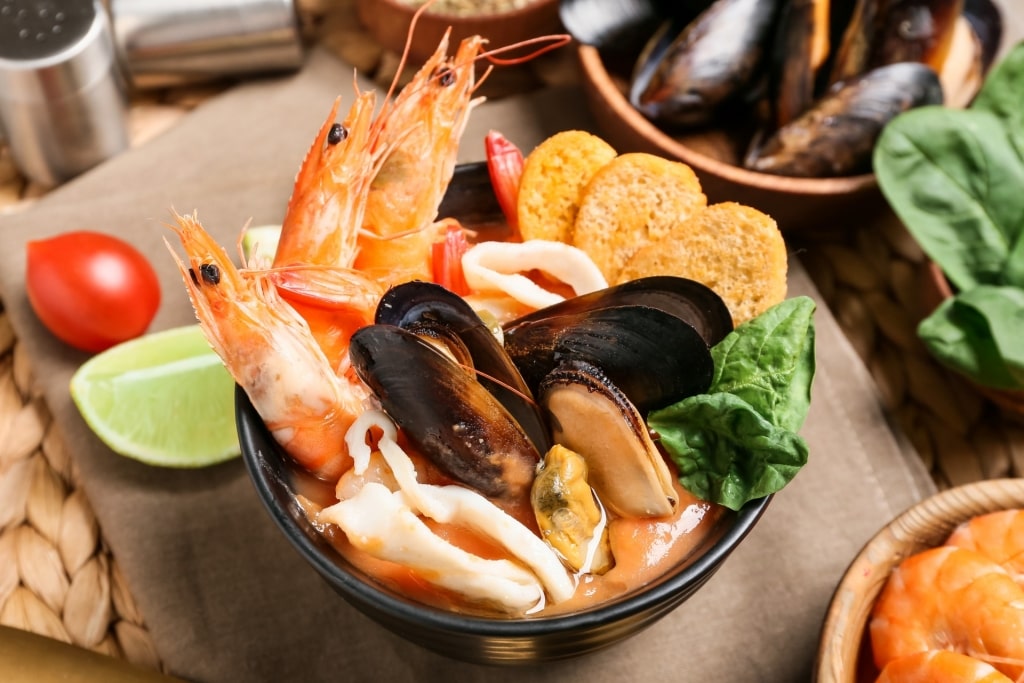
Cacciucco
There’s a tale ascribed to the creation of this popular Tuscan food. A recently widowed fisherman’s wife, without the means to feed her children, was the focus of some Livornese charity.
A medley of seafood was donated to her pot. The legendary widow added a touch of this, threw in whatever was in the cupboard, and the basis of this now iconic dish was born.
A more cynical take on its creation was that it was born of commercial necessity, in the same way bouillabaisse was in Marseilles. Local fishermen, needing to find a purpose for the tricky fish that never sold well, designed a recipe as a solution.
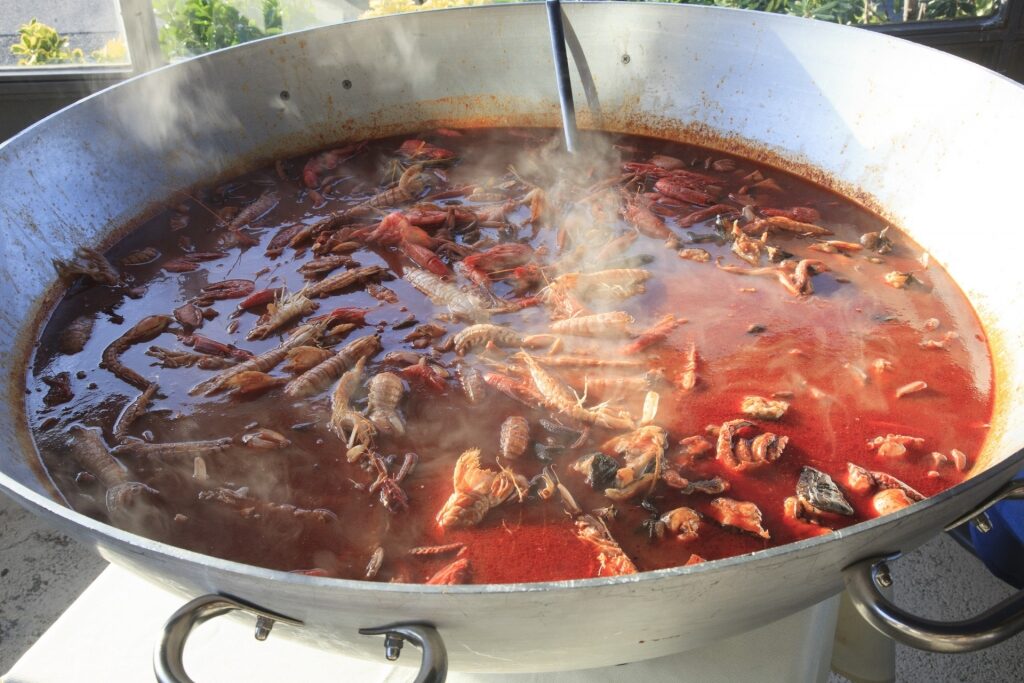
Cacciucco
The traditional version of cacciucco demonstrates that the medieval fishermen were taking no prisoners. This hearty fish stew required a shoal’s worth of 13 varieties of fish and shellfish at a minimum going into the pot. Squid and/or octopus are also thrown in for added texture.
Today, at cacciuccio hotspots such as Osteria del Mare or Cantina Senese (look for their novelty “Enjoy Cacciucco” t-shirt in an homage to Coca-Cola) that number’s been reduced by about half. Cooked in red wine and tomato broth, the whole delicious concoction is served on toasted garlic bread.
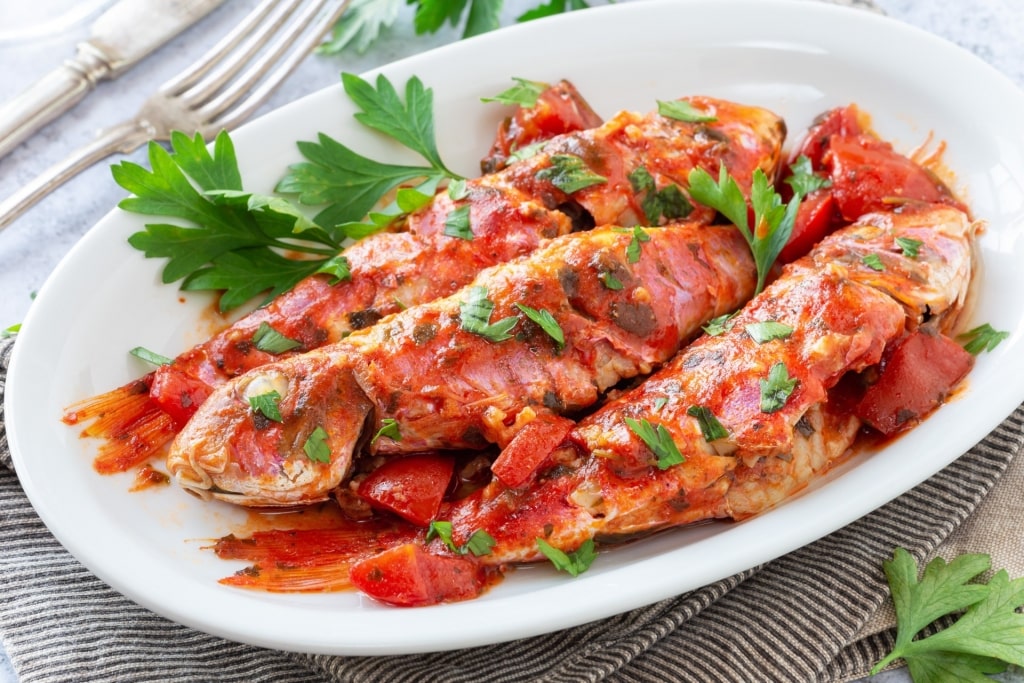
Triglie alla Livornese
If you feel like something lighter, but still in the same register, try Triglie alla Livornese. This traditional pairing of tomato and red mullet is as common as cacciuccio on the city’s menus.

Torta di ceci
For a lighter taste of Livornese cuisine, follow your nose when you’re out walking on the Terrazza Mascagni, when the salt of the sea air mixes with fried chickpea and rosemary. You’ll have found a tortai stall serving torta di ceci.
Order a “cinque e cinque” and you’ll receive a focaccia bun filled with a folded piece of crispy, chewy torta di ceci—a pancake made from chickpea flour that you can also find serving as a delicious alternative pizza base in some restaurants. Seasoned with rosemary and rock salt, it’s irresistible.
This local street food is still sometimes prepared on its traditional huge disc-shaped copper pans. You’ll find regional variations near most of the major ports in the Mediterranean.
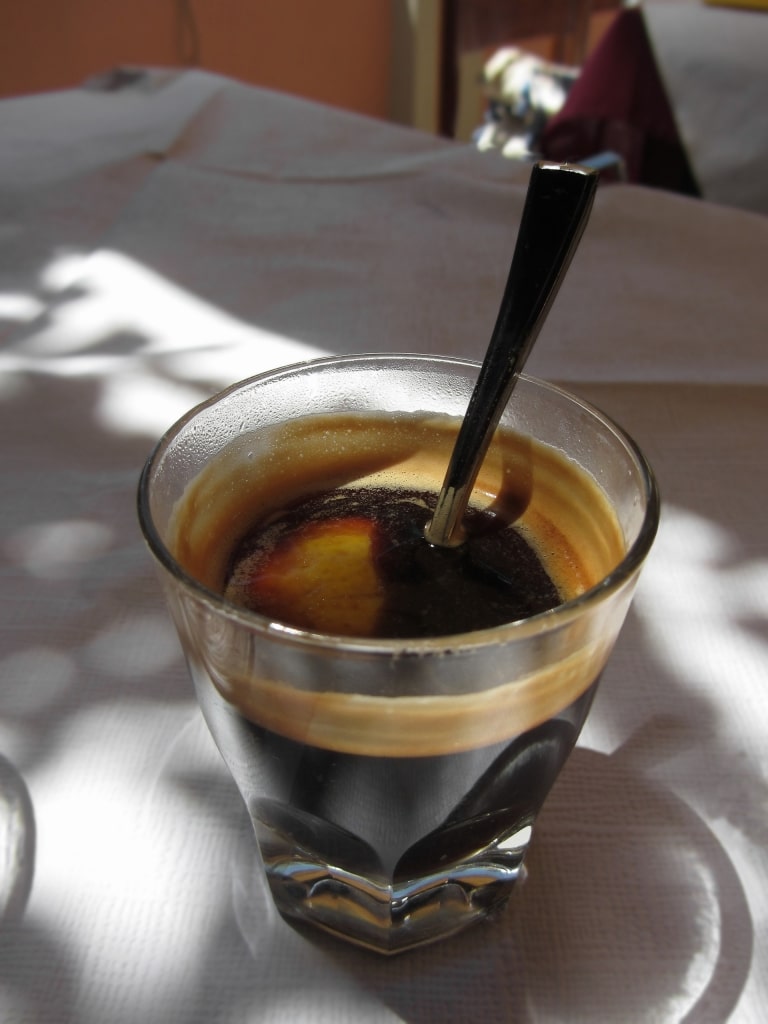
Ponce alla Livornese
The signature drink of the city is ponce alla Livornese. This energizing tipple dates back to the city’s mercantile heydays when a crate of rum was abandoned on the dockside by English tax dodgers. Not ones to look a gift horse in the mouth, the locals came up with the Tuscan version of Irish coffee.
The modern recipe that you’ll find at places like the atmospheric Bar Civili, near the train station, mixes rum (abandoned or otherwise) and coffee before being garnished with a sliver of lemon skin. If you really want to miss your rail connection, you could try the alternative version that includes an anise-flavored liqueur called sassolino.
If you’re not a coffee drinker, ask for a glass of the local, medicinal persianna liquor instead, so-called for its color match with the shutters on the canal district’s buildings.
Best Time to Visit Livorno
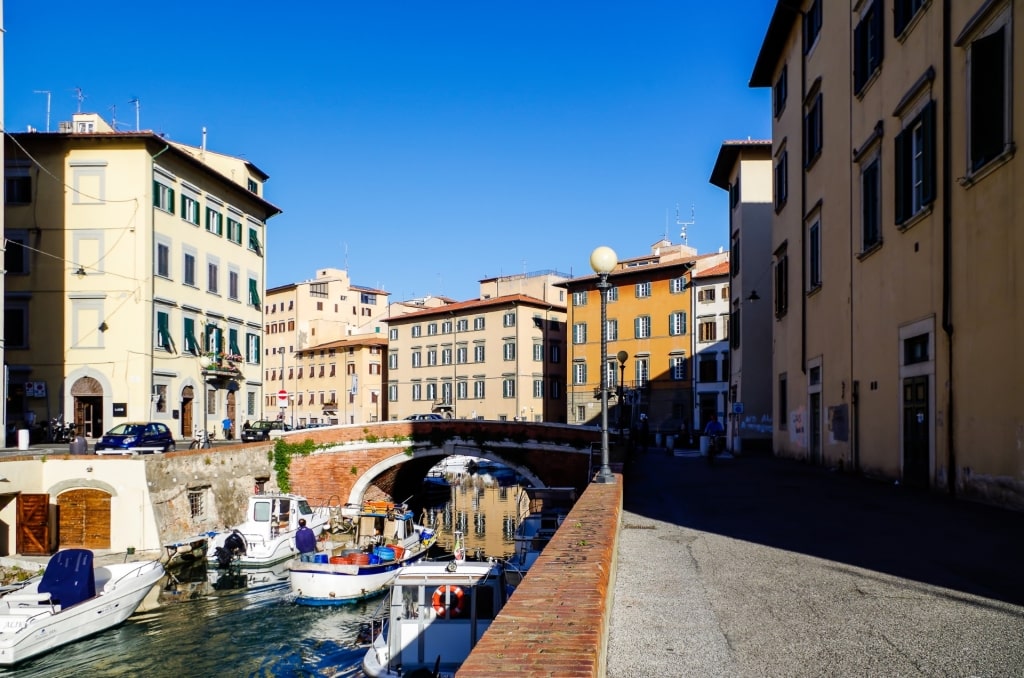
Venezia Nuova
Livorno is a wonderful place to come in the summertime, with its sea breezes and Mediterranean climate making for very comfortable conditions while on your second gelato of the morning.
Located south of Pisa, but still high enough up on the peninsula to be counted as northern Italy, Livorno enjoys a daytime average of 77°F in June, rising up in July and August to around 83°F. The chance of rain in the summer is low, especially in July.
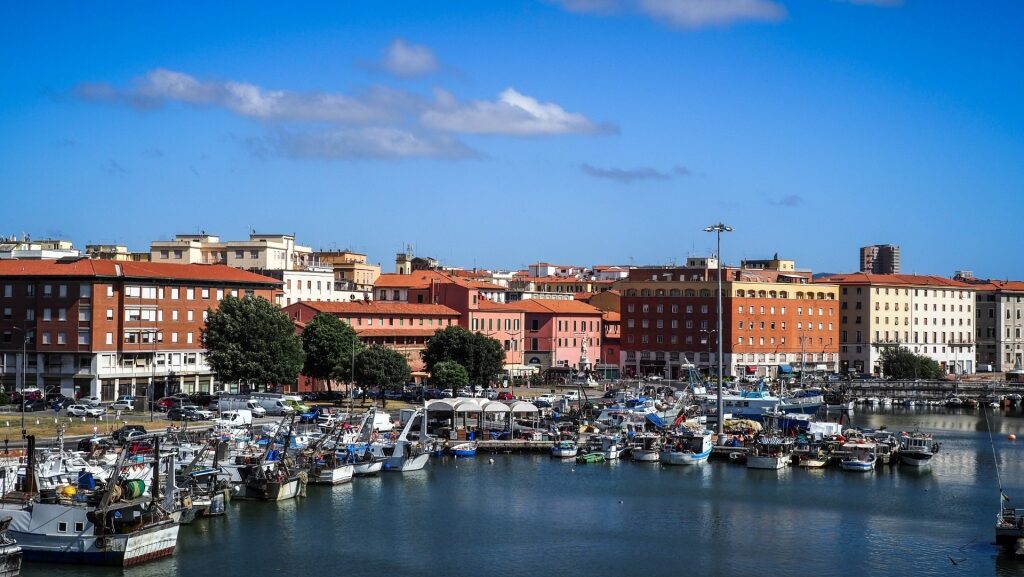
Livorno
While dining at a seafront restaurant, with the sunset refracting through the ornate balustrades of Terrazza Mascagni, you’ll be comfortable outside with the air at 78°F in the hottest months.
Read: Unforgettable Ways to Experience Italy in the Summer
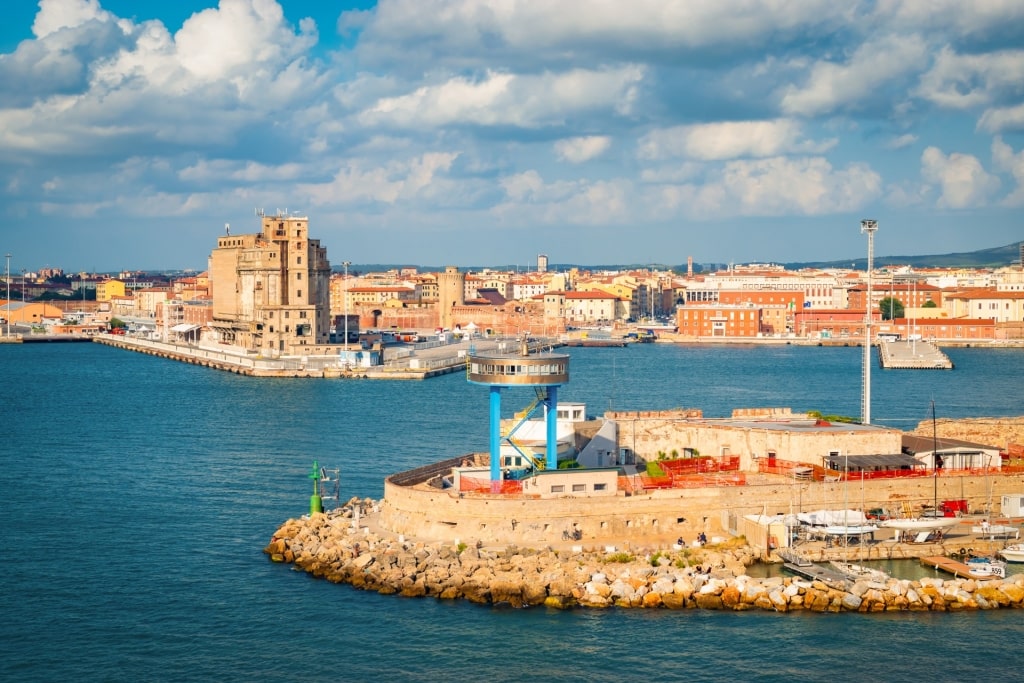
Livorno
Taste the coastal delights of Livorno, Italy, on a cruise to Tuscany. Browse our cruise itineraries online and book an Italian vacation as delicious and intriguing as a bowl of cacciucco.
